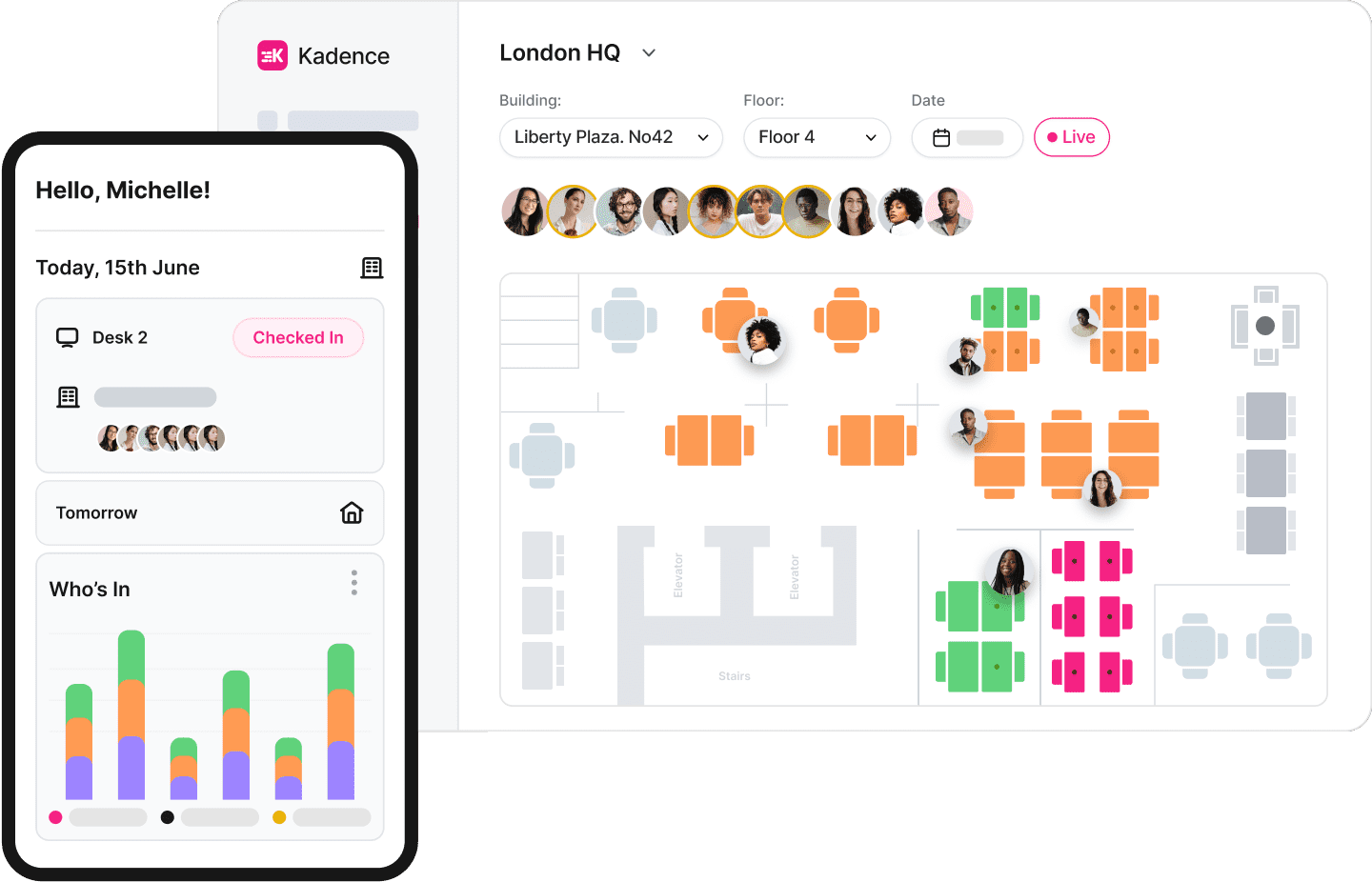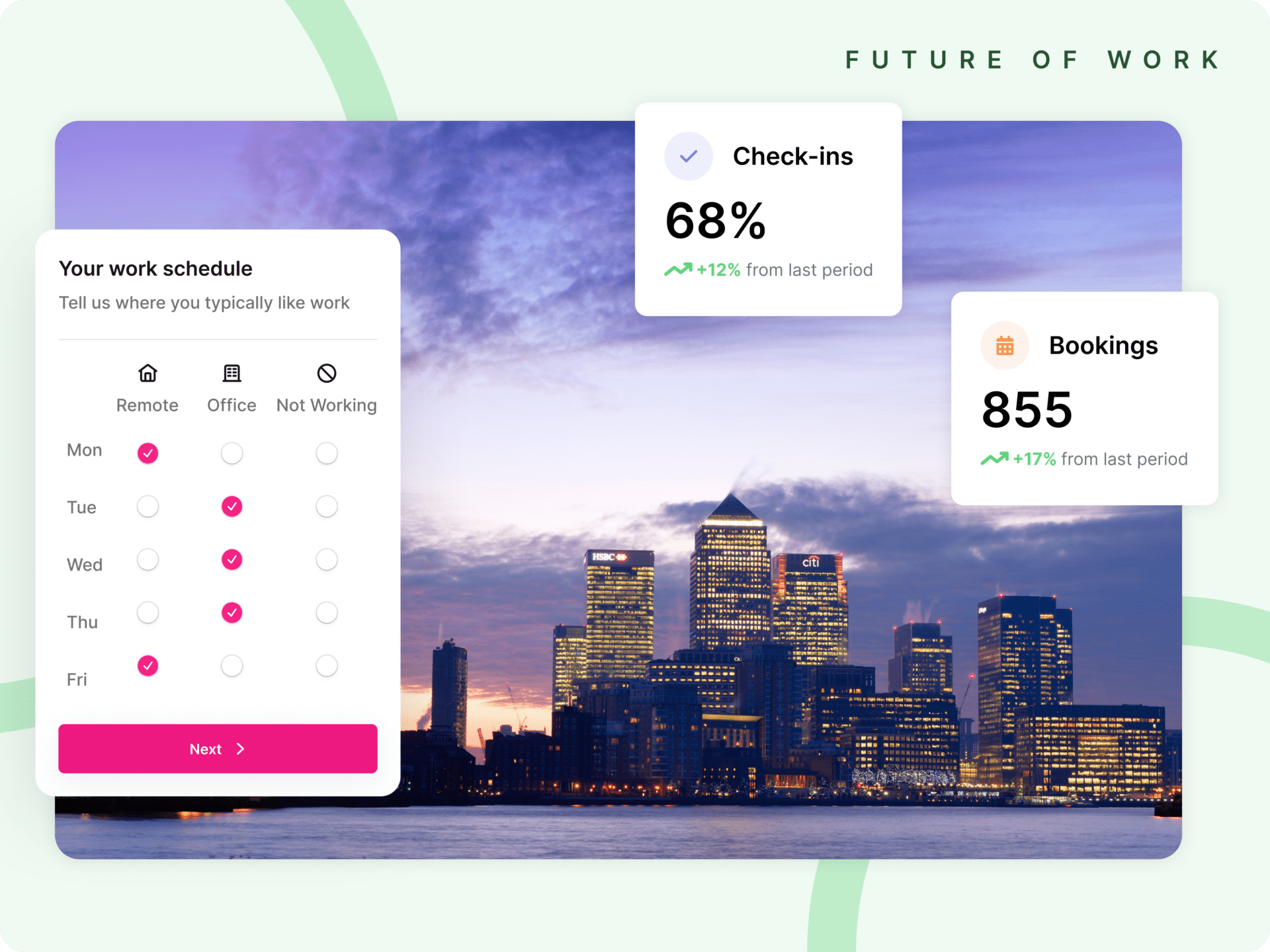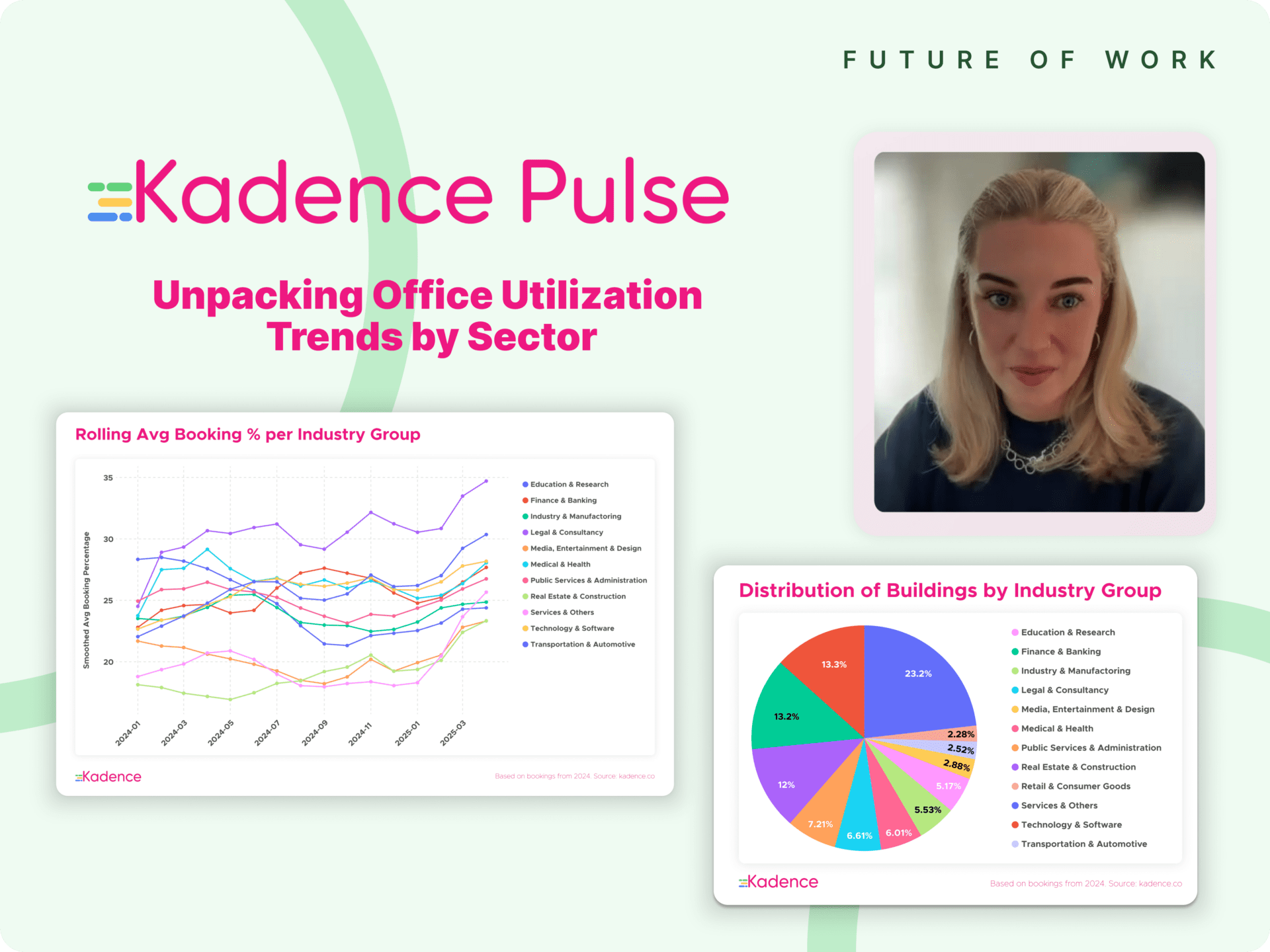The way businesses operate is evolving rapidly. Market dynamics, supply chain shifts, and emerging workforce trends are pushing companies to reevaluate their strategies and partnerships. One constant remains—hybrid work is here to stay, and mastering it requires a global perspective.
At Kadence, our team is global and we care deeply about how the world works. We’re here to help hybrid teams thrive—no matter where they are. We serve over 570 customers in over 46 countries, and we’re committed to growing that number.
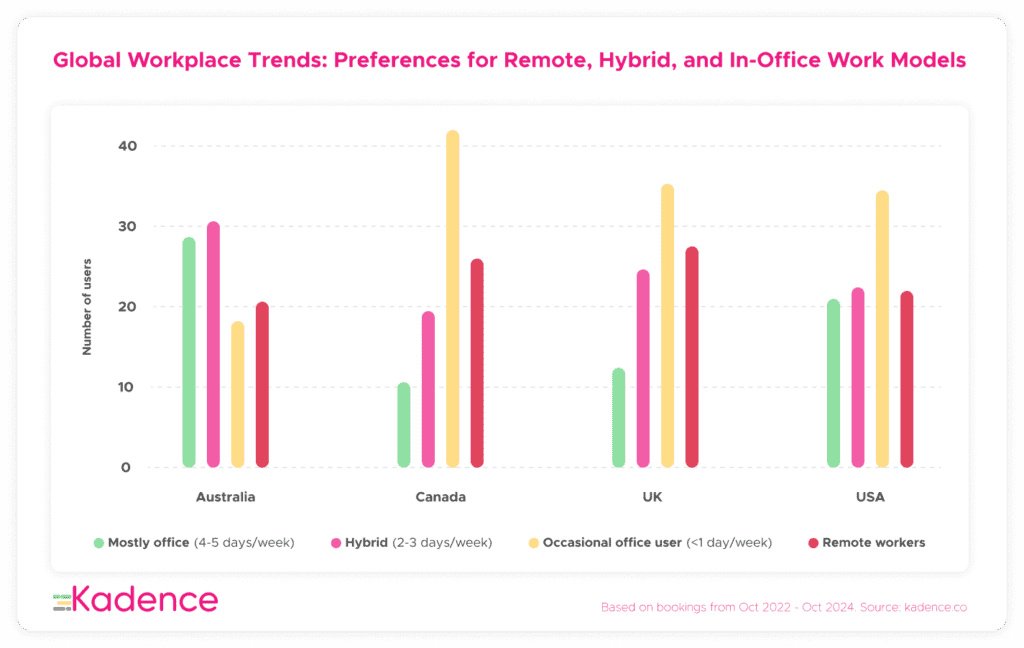
Hybrid Work Knows No Borders
Hybrid work isn’t just a passing trend. It’s the way the world works now. Businesses everywhere—big and small—are asking the same questions:
- How do we make hybrid work… work?
- How do we keep our teams connected across time zones?
- How do we get the most out of our office spaces?
- How do we ensure employees feel engaged and supported no matter where they are?
These aren’t problems that stop at a country’s borders. The ability to navigate hybrid work effectively determines a company’s competitiveness in the modern economy. That’s why Kadence is built for teams everywhere. Today, we support customers across the globe, helping them create seamless hybrid experiences that fit their unique needs.
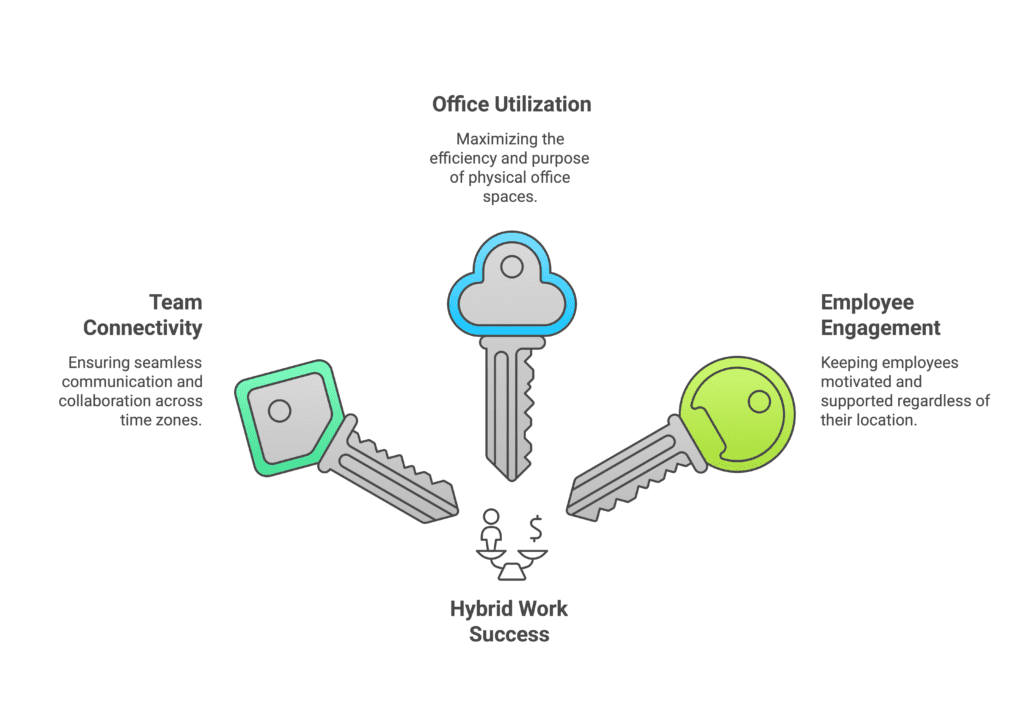
Many of these companies operate across multiple locations, each with its own set of laws, regulations, and cultural expectations. That means they need a hybrid work strategy that is flexible enough to adapt to these differences while still keeping teams aligned and productive. From charities in Brisbane to multinational corporations in London, we provide the tools and expertise necessary to help hybrid teams stay productive, engaged, and efficient.
Global Hybrid Work Policies and Trends
Hybrid work is evolving differently around the world, shaped by cultural expectations, labor laws, and economic factors. While some countries have fully embraced it, others are still figuring out the balance between remote and in-office work. Here’s how hybrid work is playing out across key regions:
Europe
A 2024 survey by the European Foundation for the Improvement of Living and Working Conditions found that hybrid work continues to dominate in much of the EU. While there was a slight 1% decline last year, it remains the most common work arrangement, with 44% of employees in roles that can be performed remotely still opting for hybrid setups.
Meanwhile, workplace-only roles have grown by 5% over the past year, now accounting for 41% of employees. This shift suggests that while hybrid work is still prevalent, some businesses are gradually increasing their in-office expectations.
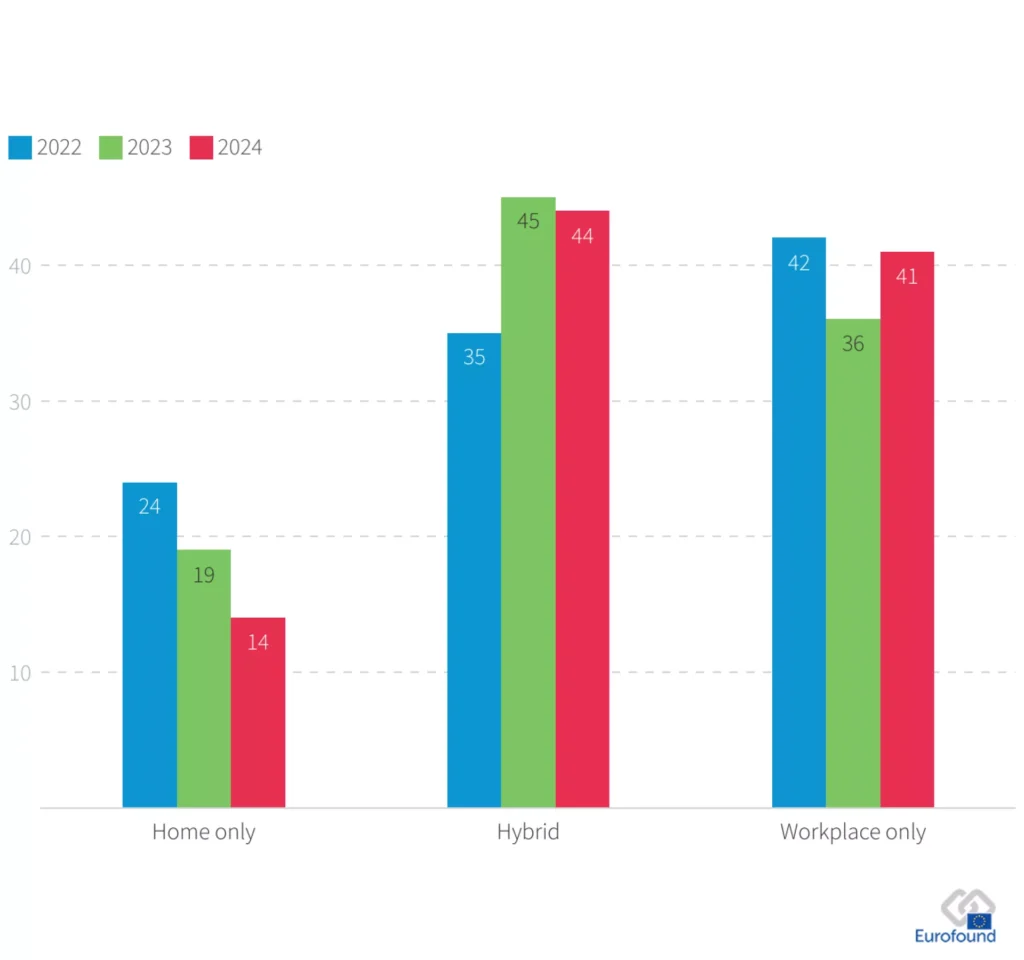
However, the adoption rate varies significantly by country. In the Netherlands, Ireland, Finland, and Germany, most workers are allowed to work from home fully or partially, with rates close to or over 70%., while other nations such as Cyprus, Greece, Croatia, Portugal, and Italy are some of the less flexible countries, with the majority of people never working from home.
Kadence data shows that in the UK, employees continue to favor remote work, resisting full return-to-office mandates. In the UK, less than 15% of workers are frequent office workers. While some companies have implemented hybrid models, the preference for flexible work remains strong, highlighting a broader shift in workplace expectations.
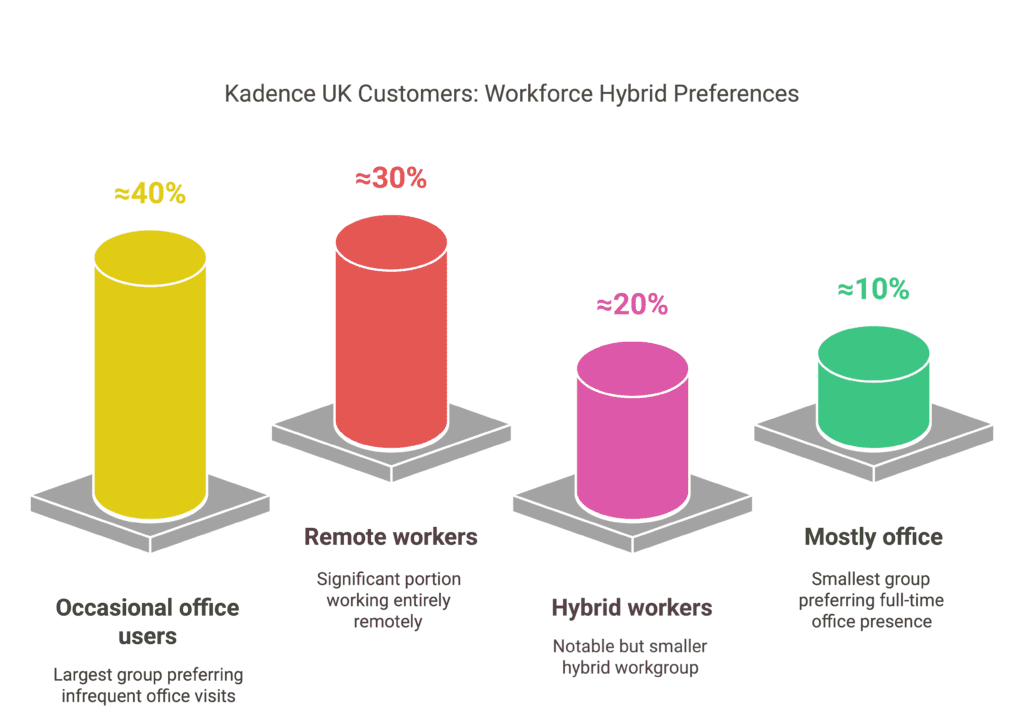
North America
In the U.S., hybrid work has seen a major surge. A recent Robert Half survey found that nearly half (48%) of workers prefer a hybrid position, while only 26% favor a fully in-office role—the same percentage who prefer to work entirely remotely.
Kadence’s data reveals that in the U.S., hybrid work has settled into a steady pattern, with most employees coming into the office about two days per week. Meanwhile, in Canada, the approach is more flexible, with employees typically spending just one day in the office each week, reflecting a stronger preference for remote work.

This shift highlights the growing demand for flexibility in the workplace. Fully remote roles have also increased, reflecting employers’ recognition of the benefits of flexible work arrangements.
According to Gallup, employees who are exclusively remote or follow a hybrid schedule report the highest engagement levels in the U.S., with 36% of remote employees and 35% of hybrid workers being engaged. Additionally, 62% of hybrid employees feel they are “thriving,” compared to 59% of remote employees and just 50% of fully on-site workers. This data highlights the positive impact of flexible work arrangements on employee well-being and productivity.
Asia-Pacific
In Asia, hybrid work adoption is a mixed bag. A recent CBRE survey found that more than 60% of companies in the region have stabilized office attendance levels, signaling a broad recognition of hybrid and flexible work arrangements as the future of work. Kadence’s data reveals in Australia, office engagement is the highest across all regions, with employees spending an average of 2–3 days per week on-site. This reflects a well-balanced mix of remote and in-person collaboration.
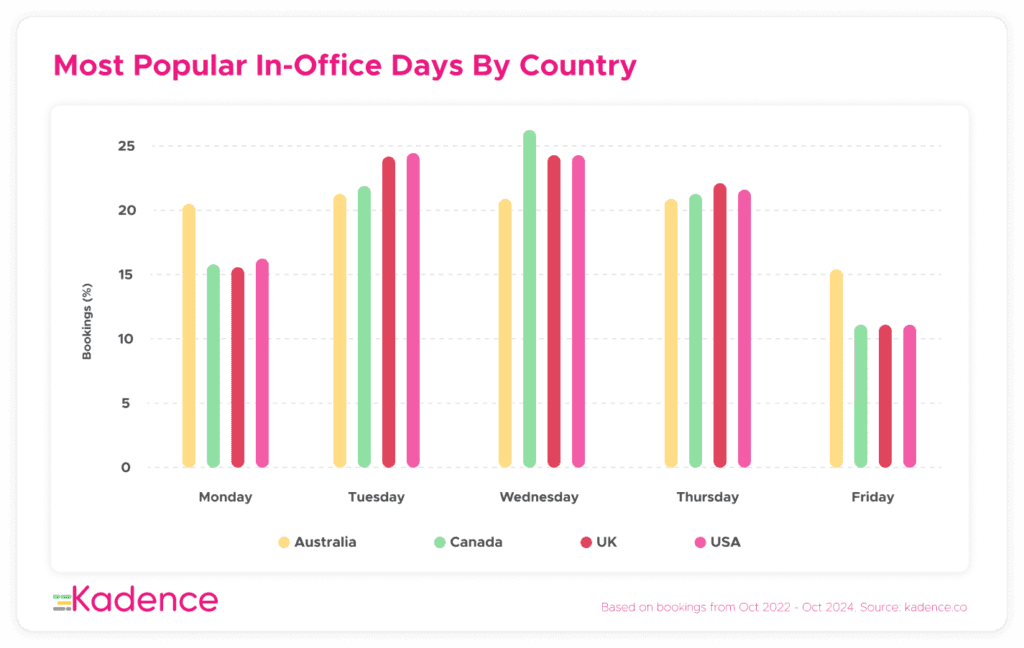
PwC’s 2024 Asia Pacific Workforce Hopes and Fears Survey found that 58% of employees engage in hybrid work in some form. Companies in cities like Singapore and Sydney have been early adopters of hybrid models, while others in more traditional office-centric cultures are gradually adjusting to more flexibility.
Why this matters: Every region faces unique challenges in implementing hybrid work, from government regulations to cultural expectations. Businesses that understand these differences and adapt their strategies accordingly will be better positioned to succeed in the future of work.
A Team That Gets It—Because We Live It
Kadence isn’t just a company with a global customer base. We’re a global hybrid team ourselves. With offices and employees in San Francisco, London, Salt Lake City, and Belfast, we know firsthand what it means to work across locations, time zones, and cultures.
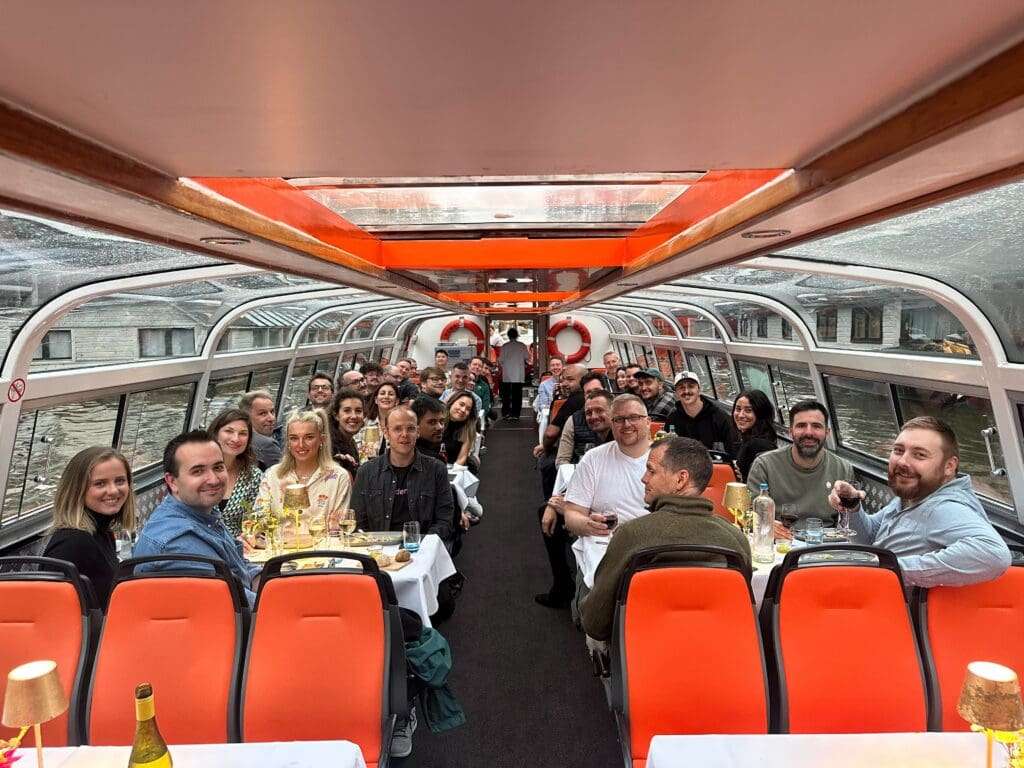
Our team represents different perspectives, work styles, and professional experiences, which helps us build a solution that is genuinely reflective of the hybrid challenges businesses face worldwide. Hybrid work isn’t just something we talk about—it’s how we operate every single day. And that gives us an edge in understanding the challenges and opportunities that come with it.
At Kadence, we don’t just study hybrid work—we live it.

Hybrid Work Is Bigger Than Politics
The reality is, workplace flexibility isn’t a US thing, a Europe thing, or an Asia thing—it’s a universal shift. Getting hybrid right is quickly becoming a competitive edge. Companies embracing hybrid work aren’t just reacting to the moment; they’re building stronger, more adaptable businesses that can attract top talent from anywhere. Organizations that limit themselves to local-only solutions risk missing out on innovation, diversity, and a workforce that thrives on flexibility.
At Kadence, we get that different regions have different needs. That’s why we’re constantly evolving to support businesses worldwide, whether they’re navigating new regulations, employee expectations, or shifting hybrid models. Our technology is designed to be adaptable, scalable, and easy to implement, no matter where in the world your team operates.
The Future Is Global, and So Are We
Political and economic landscapes will always change, but one thing is clear: businesses need flexible, productive, and people-first workplaces to succeed. That’s where we come in. We understand that hybrid work is not just about managing desks and schedules—it’s about fostering connection, collaboration, and culture, no matter the distance.
If you’re wondering whether to work with a global partner in uncertain times, ask yourself what really matters: a partner who understands hybrid work and has the tools to help you succeed. At Kadence, that’s exactly who we are. We don’t just provide a platform; we provide a future-proof approach to work that helps businesses adapt and grow.
Hybrid work is an opportunity, not a challenge. And the companies that embrace it—no matter where they are—will be the ones leading the way. Kadence is here to help you get there. Book a demo with us today.
